This week was a very interesting one. I finally got to remove my feeder branches on my thread grafts. I will be showing you a few photos of how I removed the feeder branches. I also shortened the tree and applied a sealer to the big cuts I made on the trees trunk.
Here is a link to the previous blog I posted on the thread grafts I did on this tree. In the link you will see how I prepare the tree for this process.
https://steemit.com/bonsai/@romanolsamuels/celtis-africana-my-first-thread-grafting-on-these-species-3cfe60ca19c87
*In this blog I will be using the term "feeder branch" a lot. So for this purpose I just though I would describe what I mean with "feeder branch". This would be the branch that supplies the grafted branch with the needed nutrients and sap to survive while bonding to the bark of the tree at the new location.
In the feature image you will see the tree was growing vigorously and that the leaves on the right side of the tree are smaller that the leaves on the left of the tree. The reason for this is the two branches on the left was allowed to grow wild so that they can thicken up faster. The branches on the right were pruned regularly so their leaves are smaller. The tree was watered and feed on a regular basis. The tree was allowed to grow for six months with out any work being done on the tree except trimming back the branches that grow to long. By cutting back the growth on the long branches the access growth you spared could be used by other parts of the tree. If you reduce the size of the dominant branches it gives the weaker branches the needed energy to regain strength and grow faster. By doing this regularly you can distribute the growth through out the tree evenly.
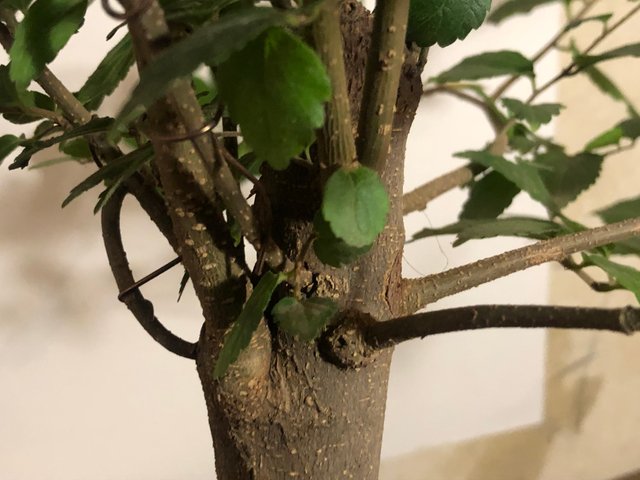
In the photo above you can see the bend in the feeder branch is thinner than the branch on the right side of the thunk where the graft exits the trunk. This is a good indication that the graft has taken and that it no longer needs the support from the feeder branch. The wound has callused over and the sap is flowing up the trunk into the branch.
The two images above shows were I removed the feeder branches. First I cut the brunches off with normal gardening scissors and then I cut the remaining branches off with the concave bonsai cutter. After I removed the access twigs I sealed the cut with a wound sealer.
After I removed the feeder branches. I shortened the trunk of the tree. The trunk was shortened to the point where most of the branches comes out of the trunk. I also removed the branches that grow too far above the rest of the branches.
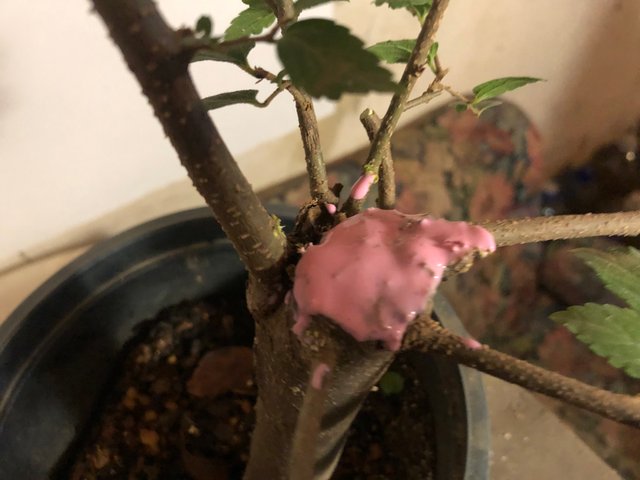
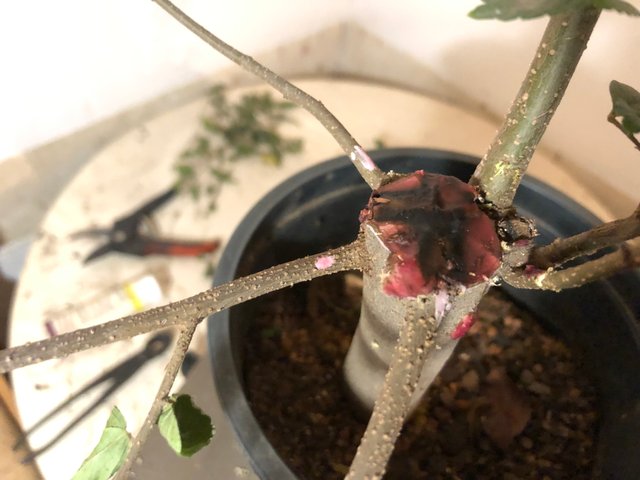
After the sealant was completely dry I took a few photos and took the tree back outdoors. If water fell on the sealant now it will change color and it will have a white transparent color. If this sealant that I use does not dry completely before water falls on it it washes away. I have heard a few comments on these types of sealant but still I prefer them as they are affordable and regularly available. The pink color might put a few frowns on other bonsai enthusiast faces but the sealant will be off long before this or any of my other trees get to a show and for that reason its all the same. Bonsai paste is expensive and I have way to many trees to use bonsai paste on my trees.
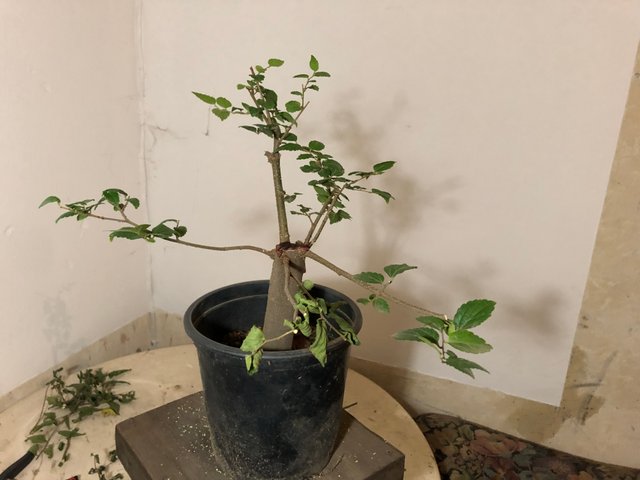
In the photo above you can see that after two days without the feeder branch one of the two grafts has died. The leaves on the branch has shrank and curled up. With most of the techniques we use on bonsai training there is always a small chance that the branch may die. With time and technique one can learn to bring down the mortality rate of branches. This was my first thread graft so a success rate of 50% is not to bad.
Here are a few things that I think lead to the one branch dying:
- I did not seal the holes after I drilled them and threaded the branch through the hole. This caused the bark on the trunk to die back a bit so the bark on the branch took longer to callus over.
- When I shortened the trunk I cut just above the grafted branch and might have damaged the bark on the branch.
- Removed the feeder branch to early.
In conclusion I am very happy with the out came of the graft. When I do my next graft there are a few things that I will be doing differently. I will leave the graft to grow longer before I remove the feeder branch. I will not remove the part above the graft on the same day as removing the feeder branch. I will give the tree time to recover before I do other work on the tree. After all bonsai is a long term plan. Taking small precise steps along the way.
Hope you enjoyed the blog. Please feel free to leave you comments below in the section provided.

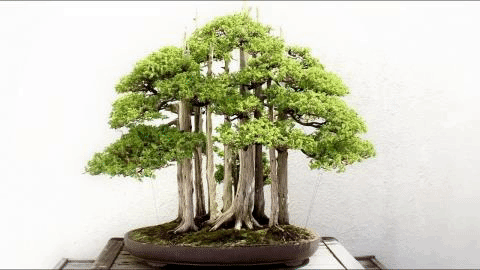
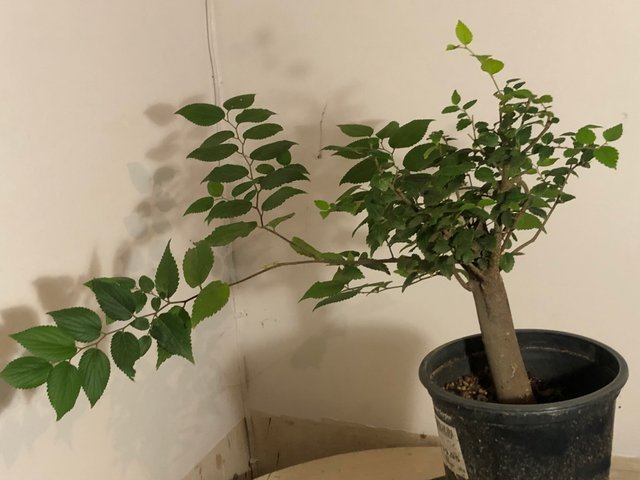
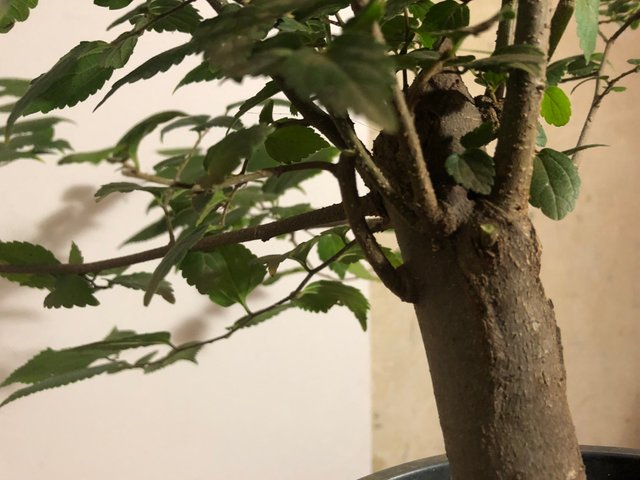
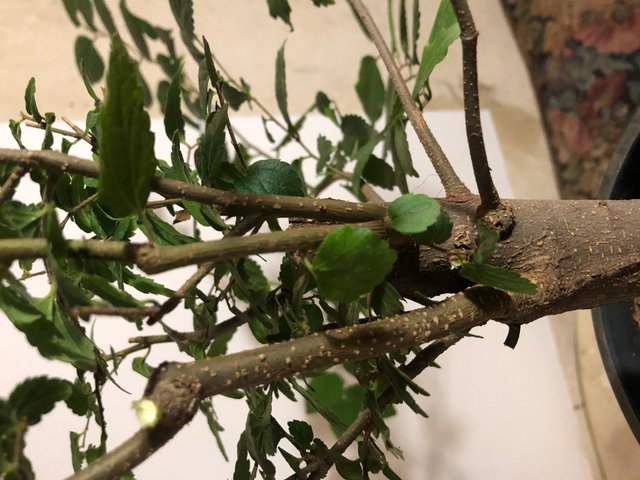
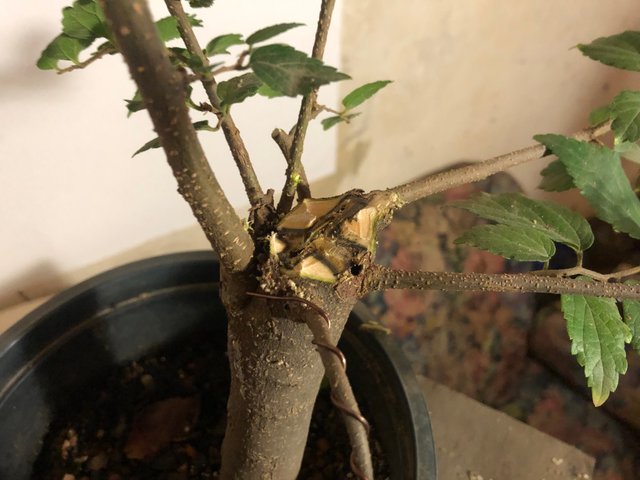
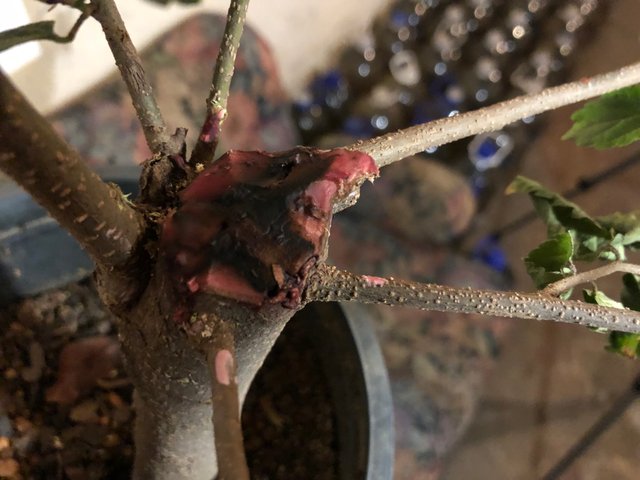
Downvoting a post can decrease pending rewards and make it less visible. Common reasons:
Submit
Celtis Africana #celtis-africana
This is a very exotic tree. Looks like you are preserving the native tree style well with the trunk shape.
Downvoting a post can decrease pending rewards and make it less visible. Common reasons:
Submit
Yes. I want to style the tree as a umbrella style tree. This is not a exotic tree in my region thow. They grow every were. They come up along the side walk and in between other plants in my garden. The funny thing is I can never find the fully grown tree that bares these seeds.
It's called a Witstink hout tree here.
Downvoting a post can decrease pending rewards and make it less visible. Common reasons:
Submit